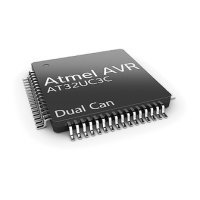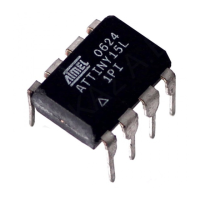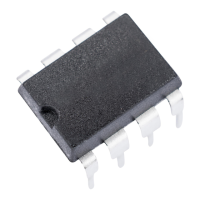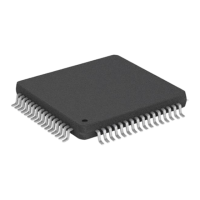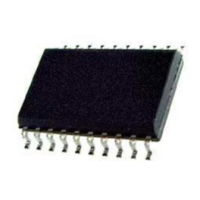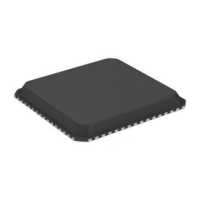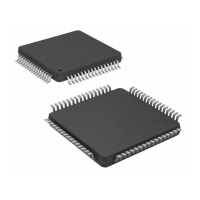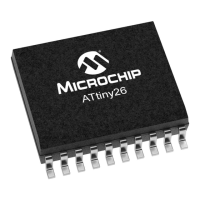71
8331B–AVR–03/12
Atmel AVR XMEGA AU
6. Event System
6.1 Features
• System for direct peripheral-to-peripheral communication and signaling
• Peripherals can directly send, receive, and react to peripheral events
– CPU and DMA controller independent operation
– 100% predictable signal timing
– Short and guaranteed response time
• Eight event channels for up to eight different and parallel signal routings and configurations
• Events can be sent and/or used by most peripherals, clock system, and software
• Additional functions include
– Quadrature decoders
– Digital filtering of I/O pin state
• Works in active mode and idle sleep mode
6.2 Overview
The event system enables direct peripheral-to-peripheral communication and signaling. It allows
a change in one peripheral’s state to automatically trigger actions in other peripherals. It is
designed to provide a predictable system for short and predictable response times between
peripherals. It allows for autonomous peripheral control and interaction without the use of inter-
rupts, CPU, or DMA controller resources, and is thus a powerful tool for reducing the complexity,
size and execution time of application code. It also allows for synchronized timing of actions in
several peripheral modules.
A change in a peripheral’s state is referred to as an event, and usually corresponds to the
peripheral’s interrupt conditions. Events can be directly passed to other peripherals using a ded-
icated routing network called the event routing network. How events are routed and used by the
peripherals is configured in software.
Figure 6-1 on page 72 shows a basic diagram of all connected peripherals. The event system
can directly connect together analog and digital converters, analog comparators, I/O port pins,
the real-time counter, timer/counters, IR communication module (IRCOM), and USB interface. It
can also be used to trigger DMA transactions (DMA controller). Events can also be generated
from software and the peripheral clock.
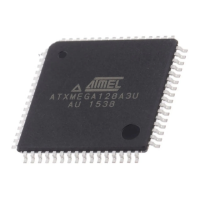
